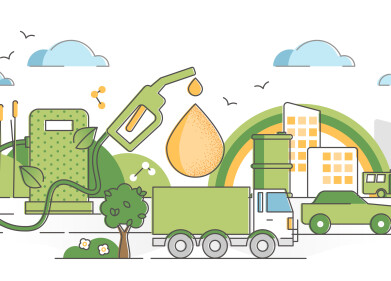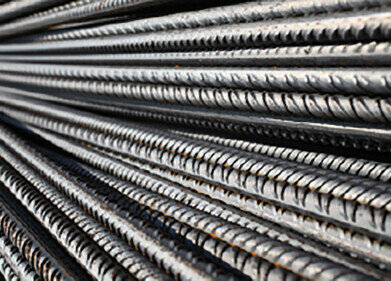Biofuel industry news
A Complete Guide to Lubricants - Types, Quality & Testing
Feb 07 2022
From offshore drilling rigs and oil refineries to jet engines and wind turbines, lubricants play a critical role in minimising friction between moving parts. They’re used to maximise mechanical efficiency across a wide range of industries and are used for both heavy-duty infrastructure and smaller components.
Want to know more about lubricants? Read on for our complete guide to these all-important substances. We cover the different types of lubricants used, critical parameters of interest, standardised testing methods used to evaluate suitability and more.
What is a lubricant?
The term “lubricant” describes a substance used to reduce friction between moving parts in a machine. Applied to individual components and complete engine systems, the main goal of lubricants is to minimise friction during movement. This helps to prevent wear and tear on moving parts and reduce the risk of mechanical failure due to overheating.
While most lubricants are designed to reduce friction and heat generation, some are used to transport foreign particles, break down debris and heat or cool a surface.
A short history of lubricants
Lubricants are vital to modern-day industries but they’re by no means a new concept. Lubricants have been used for thousands of years, with the Romans using olive oil and animal fats to grease the axles of chariots. The ancient Egyptians were also reliant on lubricants, with oil-saturated wood slats used to transport the enormous stones used to construct the Pyramids of Giza.
Commercial lubricants were popularised during the Industrial Revolution, with metal-based machinery operators making the switch from natural to petroleum-based products in the early 1900s.
The advent of vacuum distillation, which describes the creation of refined petroleum products from heavier oils produced during atmospheric distillation, further advanced the lubricant industry. The new technology allowed manufacturers to create non-volatile substances such as glycerol, which is used in many lubricants.
What are lubricants made of?
Lubricants are generally manufactured using a blend of base oil, as well as various additives. Most liquid lubricants contain around 90% base oil and 10% additives. These additives work to reduce friction and wear, improve corrosion resistance, increase viscosity index and support the overall performance of the lubricant.
Understanding the Viscosity Index (VI)
Viscosity Index (VI) is one of the most important specifications to consider when choosing a lubricant. The index is used to measure variations in viscosity at different temperatures and helps determine the suitability of a lubricant for a particular application.
What Are Lubricants Used for?
Below, we take a closer look at the main goals of lubricants and how they’re used:
- Extend the life of mechanical components
- Reduce the frequency of oil changes
- Extend time intervals between scheduled maintenance
- Minimise the risk of equipment failure
- Reduce unplanned breakdowns and downtime
- Increase uptime and profit margins
What are the different types of lubricants?
Lubricants are generally available as either oil-based, water-based or silicone-based. Within these categories, there are four types of lubricants suited to different applications. Choosing the right lubricant for the job is important, as selecting the wrong product can increase the risk of mechanical downtime and failure.
Below, we take a closer look at the different types of lubricants:
Oil lubricants
Thin and highly viscous, oil-based lubricants are made up of long polymer chains enhanced with additives. These can include corrosion inhibitors to prevent rust, antioxidants to prevent oxidisation and detergents to prevent the formation of deposits.
The viscous characteristics of oil-based lubricants make them useful for applications where even the smallest increases in resistance can affect performance. As oil is easy to disperse, these types of lubricants are also useful for applications where it’s not possible to disassemble the entire machine. In these scenarios, oil can be fed into the machine, where it will quickly disperse to all moving parts.
While oil is one of the most popular lubricant types, it’s unsuitable for use on machines that are dusty, dirty, rusty, or contain other contaminants. Adding oil-based lubricants to soiled equipment can increase friction and resistance, achieving the opposite of what the lubricant is designed to do.
Grease lubricants
Grease lubricants are generally manufactured by combining an oil (usually mineral based) with thickeners (often a lithium, calcium or sodium-based soap). Greases blend well with existing lubricants in the oil, helping them accumulate on the surface and add an extra layer of lubricity. This type of product is often used to lubricate gears, bearings, linkages and chains.
Grease if also an excellent barrier, helping to protect surfaces from water droplets and dust, as well as build ups of debris and contaminants. The viscous consistency of grease gives it good longevity and ongoing performance, winning it points when it comes to minimising maintenance.
While useful for some applications, grease is a thick and sticky lubricant which makes it unsuitable for high-speed machinery as it can create extra resistance.
Penetrating lubricants
Unlike oils and grease, penetrating lubricants aren’t designed for long-term performance. This type of lubricant has ultra-low viscosity and is designed to infiltrate small fractures in the surface. The goal is to increase lubrication and break up any rust or debris that may have formed. Penetrating lubricants are often used to loosen seized screws and bolts.
Dry lubricants
Dry lubricants step up when oils and greases are unsuitable. They’re capable of withstanding higher temperatures and don’t undergo same state changes when the mercury rises. Dry lubricants also perform well in the face of excessive wear, migration and exposure to debris. Rather than degrade in tough conditions, they remain intact and offer ongoing lubrication. This makes them ideal for use with heavy-duty infrastructure.
Dry lubricants are generally available as fluorocarbons (such as PTFE) or crystalline lattice structures (including graphite, tungsten disulphide and molybdenum). Impressive anti-friction, bond strength and chemical resistance capabilities make dry lubricants the product of choice for a wide range of applications in the oil and gas industry. Dry lubricants are also widely used in the aerospace sector for hydraulic fittings, valve components and other applications where extreme environments can compromise the performance of conventional oil and grease lubricants.
Why does the quality of lubricants matter?
Lubricants are designed to enhance performance, improve operational efficiency and minimise unplanned downtime. While lubricant is extremely effective at reducing friction, quality issues can compromise these goals. For this reason, lubricant manufacturers carry out in-depth quality testing during refining and blending processes.
Base oils, additives, and finished products are tested. End users will also carry out acceptance testing, which involves testing the lubricant to ensure it meets the promised quality standards.
How do you test for the quality of lubricants?
A variety of methods are used to test for the quality of lubricants, including globally used standards published by ASTM International. Read on for a closer look at some of the methods used for lubricant quality testing:
-
ASTM D445 for viscometrics
This ASTM test method is designed to determine the kinematic viscosity of both opaque and transparent lubricants. It uses a calibrated glass capillary viscometer to measure the rate at which the lubricant flows under gravity.
-
ASTM D5182 for abrasive wear and friction control
This method runs assesses gear-tooth face wear to determine the scuffing resistance of lubricants. ASTM has strict guidelines, with rigs operated at 1450 rpm and teeth inspected at 15-minute intervals. As well as visible condition, the net weight loss of gear teeth is calculated to assess abrasive wear.
-
ASTM D943 for oxidation resistance
ASTM D943 is considered the gold-standard method for measuring the oxidation stability of lubricants. It’s particularly useful for lubricants that are at risk of water contamination.
-
ASTM D1401 for water separation
This dispersancy test calculates the water separation characteristics of lubricants exposed to turbulence and H2O contamination.
-
ASTM D2896 for base number
Acidic titration is used to identify and quantify basic constituents (also known as additives) in lubricants. The ASTM D2896 method calculates the base number of each additive, with the test used to monitor quality assurance in new products and measure degradation in existing lubricants.
-
ASTM D2711 for demulsibility
Exposure to turbulence caused by circulation and pumping can fast-track water contamination and produce water-in-oil emulsions. The ASTM D2711 test measures the demulsibility characteristics of a lubricant and helps determine suitability for different applications.
-
ASTM D4951-09 for detergency
In some lubricants, additives can combine to act as detergents that actively prevents the build-up of deposits on solid surfaces.
-
ASTM D665 for corrosion resistance
Exposure to water and condensation can accelerate corrosion, making lubricants with anti-corrosion properties desirable for applications such as steam turbine gears. The ASTM D665 is used to evaluate the corrosion resistance of a lubricant and can also be used to test for degradation in circulating oils.
-
ASTM D97 for pour point
Pour point is another characteristic that can affect performance, with the ASTM D97 used to determine the lowest temperature at which flow is compromised and a lubricant becomes semi-solid.
What are the characteristics of a good lubricant?
Just like oil grades differ in quality and performance, not all lubricants are created equal. While different lubricants offer different characteristics, in general a high-quality product should feature the following:
- High boiling point
- Resistance to high temperatures
- Low freezing point
- A high viscosity index
- Thermal stability
- Hydraulic stability
- The ability to release water (demulsibility)
- Anti-corrosion properties
- Oxidation resistance
Every engine is different and requires a specialised approach when it comes to lubrication. For example, a jet engine will have different lubrication needs to pumps and compressors used in an oil refinery.
A deep understanding of properties such as viscosity index, thermal stability and oxidation resistance allows operators to make the best possible choices when selecting a lubricant. Find out more about the latest technologies being used in ‘An innovative instrument to test lubricity in fuels: Ball-on-Cylinder Lubricity Evaluator (BOCLE)’.
Digital Edition
PIN 25.5 Oct/Nov 2024
November 2024
Analytical Instrumentation - Picturing Viscosity – How Can a Viscometer or a Rheometer Benefit You? - Sustainable Grease Formulations: Evaluating Key Performance Parameters and Testing Method...
View all digital editions
Events
Jan 20 2025 San Diego, CA, USA
Jan 22 2025 Tokyo, Japan
Jan 25 2025 San Diego, CA, USA
SPE Hydraulic Fracturing Technology Conference and Exhibition
Feb 04 2025 The Woodlands, TX, USA
Feb 05 2025 Guangzhou, China



















